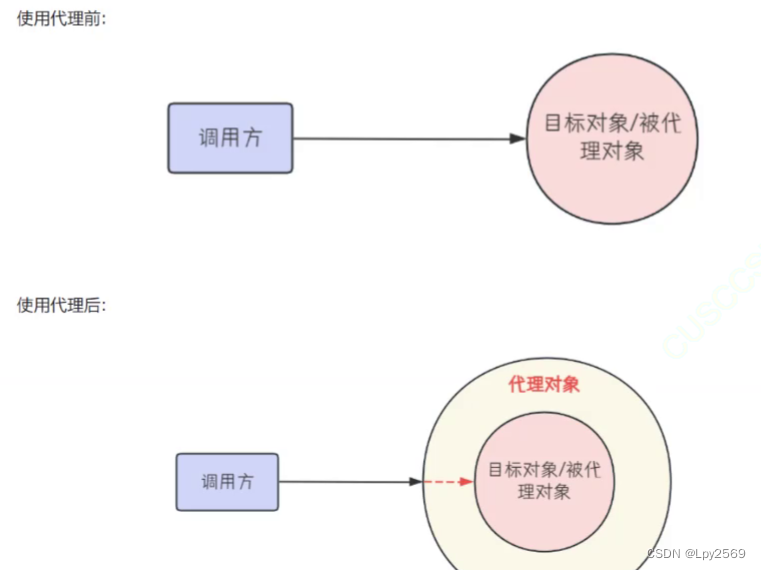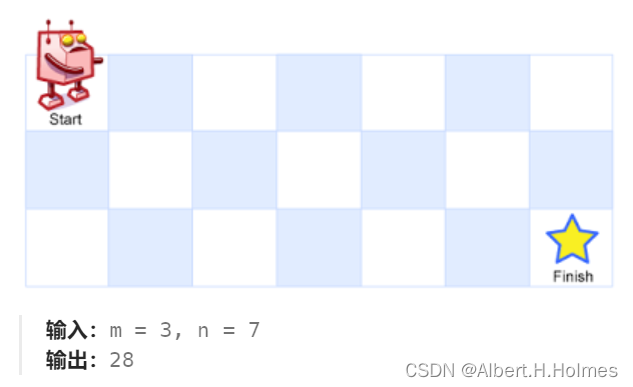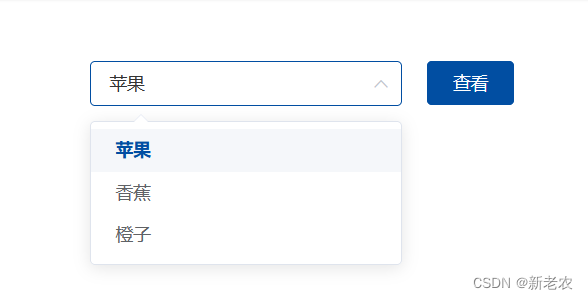前言:
项目中,当每一个角色得到的界面不一致的时候,我们就不能使用静态菜单了,而是要从后端得到动态的菜单数据,然后动态的将菜单数据展示在界面上。
除了在界面展示,也还要将界面的路由动态添加,在路由动态添加之后,你可能会出现刷新界面,界面变白的情况,页面刷新白屏其实是因为vuex引起的,由于刷新页面vuex数据会丢失,所以动态添加路由这一步也就失效了。这种情况我会在最后给一个处理方法。


动态菜单生成
1.获得后端数据(有mock模拟数据,也可以使用后端接口)
1.1使用mock得到模拟数据
没有下载mock的可以查看:Vue项目中使用mockjs实现mock模拟数据 – ykCoder – 博客园 (cnblogs.com)
mock/modules/menu.js 保存模拟的后端数据
function list(res) {
// res是一个请求对象,包含: url, type, body
return {
code: 200,
message: "请求成功",
//菜单数据,可以修改成你自己要的菜单
data: [
{
id: "600d4075e218daaf4ec77e50",
menuType: "1",
menuName: "首页",
path: "/Home",
icon: "house",
},
{
id: "600d4075e218daaf4ec77e51",
menuType: "1",
menuName: "公司管理",
path: "/company",
icon: "location",
children: [
{
id: "600d525e602f452aaeeffcd9",
menuType: "1",
menuName: "公司资料",
path: "/company/Company",
},
{
id: "601bc4f8a794e23c2e42efa9",
menuType: "1",
menuName: "个人资料",
path: "/company/Person",
},
],
},
};
}
//暴露list
export default { list };
// 引入mockjs
import Mock from 'mockjs'
// 引入模板函数类
import menu from './modules/menu'
// Mock函数
const { mock } = Mock
// 设置延时
Mock.setup({
timeout: 400
})
// 使用拦截规则拦截命中的请求,mock(url, post/get, 返回的数据);
Mock.mock('/mock/menu', 'get', menu.list)在界面引用
<script>
export default {
data() {
return {
menuData:[],
};
},
methods: {
getMenu() {
this.$http.get('/mock/menu').then((res) => {
console.log(res)
if (res.data.code === 200) {
this.menuData = res.data.data;
// console.log(this.menuData,"menuData")
//获取菜单的数据,存入store中
this.$store.commit("setMenu",this.menuData)
//动态生成路由
this.$store.commit("addMenu",this.$router)
}
})
},
handleOpen(key, keyPath) {
console.log(key, keyPath);
},
handleClose(key, keyPath) {
console.log(key, keyPath);
},
},
};
</script>1.2连接后端接口(统一接口管理),从后端得到菜单数据
016-尚硅谷-尚品汇-API接口统一管理_哔哩哔哩_bilibili
Vue封装接口思路(包括请求(响应拦截器))_vue接口封装_忧郁火龙果的博客-CSDN博客
import axios from 'axios';
//1.利用axios对象的方法create,去创建一个axios实例。
const requests = axios.create({
//配置对象
//接口当中:路径都带有/api 基础路径,发送请求的时候,路径当中会出现api
baseURL:"/api",
//代表请求超时的时间
timeout:5000,
})
//请求拦截器:
requests.interceptors.request.use((config) =>{
//config:配置对象,对象里面有一个属性很重要,header请求头
return config;
})
//响应拦截器
requests.interceptors.response.use((res)=>{
//成功的回调函数:服务器相应数据回来以后,响应拦截器可以检测,可以做一些事情
return res.data;
},(error)=>{
//失败的回调函数
return Promise.reject(new Error('faile'));
})
//对外暴露
export default requests;import requests from "./request";
export const menuList = (data) => {
return requests({
url: "/user/menus",
method: 'GET',
data: data,
});
};在界面引用
<script>
import { menuList } from "@/api/menu.js";
export default {
data() {
return {
menuData:[],
};
},
methods: {
getMenu() {
const id = 1;
//假数据
const res = menuList(id);
console.log(res.data);
if (res.code == 200) {//获得菜单导航数据
this.menuData = res;
} else {//没有获得菜单数据
}
},
},
};
</script>2.接收界面数据,实现动态界面
2.1界面实现
我的菜单界面是用两个vue文件写的。组件间的传值要用vuex,这里建议去看一下官网学习一下。
组件间的传值:Vue组件之间的传值 – 掘金 (juejin.cn)
HomeMenu.vue
这里实现二级菜单用的是递归的方法,这个是我觉得很神奇的地方,我第一次在vue中使用到了递归。在此之前我觉得vue就只能实现做界面的功能,没有想到过vue也可以这么灵活。
<home-menu :menuData="item.children" />//在组件中调用组件本身,使用递归的方法实现二级目录。全部代码
<template>
<div>
<template v-for="item in menuData" :key="item">
<el-sub-menu
:index="item.id"
v-if="
item.children &&
item.children.length > 0 &&
item.children[0].menuType.toString() === '1'
"
>
<template #title>
<el-icon><component :is="item.icon" /></el-icon>
<span>{{ item.menuName }}</span>
</template>
<home-menu :menuData="item.children" />
</el-sub-menu>
<el-menu-item
@click="clickMenu(item)"
v-else-if="item.menuType.toString() === '1'"
:index="item.path"
:key="item.id"
>
<template #title>
<el-icon><component :is="item.icon" /></el-icon>
<span>{{ item.menuName }}</span>
</template>
</el-menu-item>
</template>
</div>
</template>
<script>
export default {
name: "home-menu",
//为了实现组件间的传值
props: ["menuData"],
methods: {
//点击菜单
clickMenu(item) {
console.log("item:" + item);
//当前路由与跳转路由不一致时跳转
if (this.$route.path !== item.path && !(this.$route.path === '/home' && (item.path === '/'))) {
this.$router.push(item.path);
}
},
},
};
</script>
<template>
<div>
<el-menu
active-text-color="#ffd04b"
background-color="#545c64"
class="el-menu-vertical-demo"
default-active="2"
text-color="#fff"
@open="handleOpen"
@close="handleClose"
>
<h3>{{ isCollapse ? "排班" : "智能排班系统" }}</h3>
<home-menu :menuData="menuData"></home-menu>
</el-menu>
</div>
</template>
<script>
import HomeMenu from "@/components/menu/HomeMenu.vue";
import { thisTypeAnnotation } from "@babel/types";
import { mapState } from 'vuex';
export default {
components: {
"home-menu": HomeMenu,
},
data() {
return {
menuData:[],
};
},
mounted() {
//获得菜单
this.getMenu();
},
computed: {
//给store传递menuData的值
...mapState({
menuData: (state) => state.menu.menuData
}),
},
methods: {
getMenu() {
this.$http.get('/mock/menu').then((res) => {
console.log(res)
if (res.data.code === 200) {
this.menuData = res.data.data;
// console.log(this.menuData,"menuData")
//获取菜单的数据,存入store中
this.$store.commit("setMenu",this.menuData)
//动态生成路由
this.$store.commit("addMenu",this.$router)
}
})
},
handleOpen(key, keyPath) {
console.log(key, keyPath);
},
handleClose(key, keyPath) {
console.log(key, keyPath);
},
},
};
</script>
<style lang="less" scoped>
.el-menu-vertical-demo:not(.el-menu--collapse) {
width: 200px;
min-height: 400px;
}
.el-menu {
height: 100vh;
border-right: none;
h3 {
color: #fff;
text-align: center;
line-height: 48px;
font-size: 16px;
font-weight: 400px;
}
}
</style>2.2组价间传值的使用
store/menu.js 这里的addMenu函数值实现动态路由的关键,在下面会有分析
export default {
state: {
// 动态菜单
menuData: [],
},
//修改字段
mutations: {
//设置菜单的数据
setMenu(state, val) {
state.menuData = val;
},
//动态注册路由
addMenu(state, router) {
// 处理动态路由的数据
const menuData = JSON.parse(JSON.stringify(state.menuData));
const menuArray = [];
menuData.forEach((item) => {
if (item.children && item.children.length >= 1) {
menuArray.push(...item.children);
} else {
menuArray.push(item);
}
});
console.log(menuArray, "menuArray");
// 路由的动态添加
if (menuArray[0] !== "") {
menuArray.forEach((item) => {
router.addRoute("main", { path: `${item.path}`,component: () => import(`@/views${item.path}.vue`) });
});
}
},
},
};
menu/index.js
import { createStore } from 'vuex'
import createPersistedState from "vuex-persistedstate"
import menu from './menu'
export default createStore({
state: {
},
getters: {
},
mutations: {
},
actions: {
},
modules: {
menu
},
/* vuex数据持久化配置 */
plugins: [
createPersistedState({
// 存储方式:localStorage、sessionStorage、cookies
storage: window.sessionStorage,
// 存储的 key 的key值
key: "store",
reducer(state) { //render错误修改
// 要存储的数据:本项目采用es6扩展运算符的方式存储了state中所有的数据
return { ...state };
}
})
]
})
3.实现动态路由
3.1实现动态路由的代码分析
上面的代码已经实现了动态路由,这里是解释一下动态路由的关键上面,网上关于动态路由的代码很多,但是对于第一次做动态路由的人来说,想要去看懂事有点难度的。
创建一个新的空数组,遍历menuData的时候根据元素有没有children来分别处理,将需要的数据保存到新数组中,通过传入的path路径来添加路由。
最重要的部分来了,vue router4的版本不再使用router.addRoutes而是router.addRoute,这个地方建议看官方文档
router.addRoute("main", { path: `${item.path}`,component: () => import(`@/views${item.path}.vue`) });//动态注册路由
addMenu(state, router) {
// 处理动态路由的数据
const menuData = JSON.parse(JSON.stringify(state.menuData));
const menuArray = [];
menuData.forEach((item) => {
if (item.children && item.children.length >= 1) {
menuArray.push(...item.children);
} else {
menuArray.push(item);
}
});
console.log(menuArray, "menuArray");
// 路由的动态添加
if (menuArray[0] !== "") {
menuArray.forEach((item) => {
router.addRoute("main", { path: `${item.path}`,component: () => import(`@/views${item.path}.vue`) });
});
}
},下面贴一下vue2项目的写法,这里我使用时先把元素中添加component属性,这里和上面的写法有点不一样,但是我建议还是用上面的好一点,这个写法可能会出bug。
item.component = (resolve) => require([`@/views/home/${item.url}`], resolve)
//动态注册路由
addMenu(state, router) {
// 处理动态路由的数据
const menuArray = []
state.menuData.forEach(item => {
if (item.children) {
item.children = item.children.map(item => {
item.component = (resolve) => require([`@/views/home/${item.url}`], resolve)
return item
})
menuArray.push(...item.children)
} else {
item.component = (resolve) => require([`@/views/home/${item.url}`], resolve)
menuArray.push(item)
}
})
console.log(menuArray, 'menuArray')
// 路由的动态添加
menuArray.forEach(item => {
router.addRoute('main', item)
})
},还有一个处理方法,你可以在传过来的数据中就传path,component的值,最后直接使用
在HomeAside.vue界面之间的引用
//获取菜单的数据,存入store中
this.$store.commit("setMenu",this.menuData)
//动态生成路由
this.$store.commit("addMenu",this.$router)3.2刷新界面后,白屏处理
恭喜你,来到最后一步,在最前面的时候说过,白屏问题是因为vuex引起的,由于刷新页面vuex数据会丢失,所以动态添加路由这一步也就失效了。我在网上找了很多方法都没有解决,最后回归到问题的本质,刷新界面vuex的数据会丢失,那么我们不让数据丢失不就行了,我的处理方法是在
这个是vue3的处理:
import { createApp } from "vue";
import App from "./App.vue";
import router from "./router";
import store from "./store";
import ElementPlus from "element-plus";
import "element-plus/dist/index.css";
import * as ElIconModules from "@element-plus/icons";
import '@/mock';
import axios from 'axios';
import VueAxios from 'vue-axios';
//动态菜单路由的生成
const addMenu = () => {
store.commit("addMenu",router)
}
addMenu()
const app = createApp(App);
app.use(store).use(router).use(ElementPlus).use(VueAxios,axios).mount("#app");
// 统一注册Icon图标
for (const iconName in ElIconModules) {
if (Reflect.has(ElIconModules, iconName)) {
const item = ElIconModules[iconName];
app.component(iconName, item);
}
}这个是vue2的处理:
import Vue from 'vue';
import router from './router'
import store from './store'
import App from './App.vue'
import ElementUI from 'element-ui'
import 'element-ui/lib/theme-chalk/index.css'
Vue.use(ElementUI);
import axios from 'axios'
//配置请求根路径
axios.defaults.baseURL = "http://localhost:8088"
//将axios作为全局的自定义属性,每个组件可以在内部组件访问
Vue.prototype.$http = axios
//添加全局前置导航守卫
router.beforeEach((to, from, next) => {
//判断token是否存在
// localStorage.setItem("token", message.data.token);
const token = localStorage.getItem("token");
// localStorage.clear();
console.log(token,'token')
if( !token && to.name !== 'login' ){//token不存在,没有登录
next({ name : 'login' })
} else {
next();
}
})
new Vue({
router,
store,
el: '#app',
created() {
store.commit('addMenu',router)
},
render: h => h(App)
});原文地址:https://blog.csdn.net/bu_xiang_tutou/article/details/129478060
本文来自互联网用户投稿,该文观点仅代表作者本人,不代表本站立场。本站仅提供信息存储空间服务,不拥有所有权,不承担相关法律责任。
如若转载,请注明出处:http://www.7code.cn/show_29142.html
如若内容造成侵权/违法违规/事实不符,请联系代码007邮箱:suwngjj01@126.com进行投诉反馈,一经查实,立即删除!








